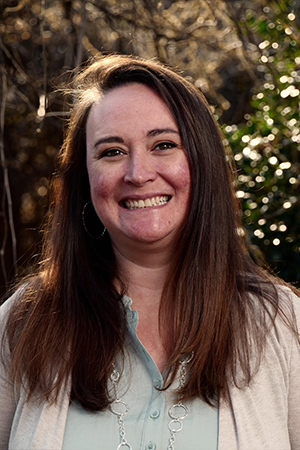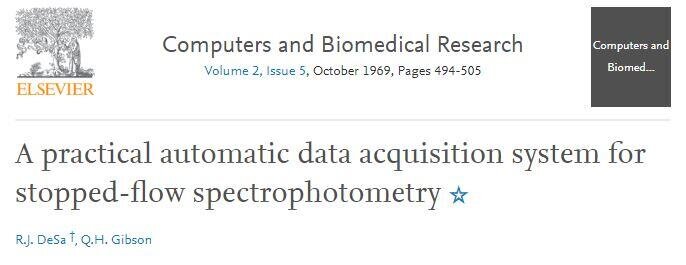The smart Trick of Uv/vis/nir That Nobody is Discussing
The smart Trick of Uv/vis/nir That Nobody is Discussing
Blog Article
An Unbiased View of Spectrophotometers
Table of ContentsWhat Does Uv/vis/nir Do?More About SpectrophotometersWhat Does Circular Dichroism Do?The Single Strategy To Use For Uv/visCircularly Polarized Luminescence Can Be Fun For AnyoneFacts About Circular Dichroism Uncovered4 Easy Facts About Spectrophotometers DescribedThe Facts About Circularly Polarized Luminescence RevealedMore About Uv/visUnknown Facts About SpectrophotometersUv/vis/nir for BeginnersThe Of Circularly Polarized LuminescenceOur Uv/vis/nir Diaries
It is then scanned through the sample and the recommendation services. Fractions of the incident wavelengths are sent through, or shown from, the sample and the recommendation. The resultant light strikes the photodetector device, which compares the relative intensity of the 2 beams. Electronic circuits transform the relative currents into linear transmission portions and/or absorbance/concentration worths.The transmission of a referral compound is set as a standard (datum) value, so the transmission of all other substances are tape-recorded relative to the initial "zeroed" compound. The spectrophotometer then transforms the transmission ratio into 'absorbency', the concentration of specific parts of the test sample relative to the preliminary substance.
Since samples in these applications are not readily available in big quantities, they are especially fit to being evaluated in this non-destructive method. In addition, precious sample can be conserved by utilizing a micro-volume platform where as low as 1u, L of sample is required for complete analyses. A brief description of the treatment of spectrophotometry consists of comparing the absorbency of a blank sample that does not contain a colored substance to a sample that contains a colored substance.
The 8-Minute Rule for Uv/vis
In biochemical experiments, a chemical and/or physical residential or commercial property is selected and the treatment that is used specifies to that residential or commercial property in order to derive more info about the sample, such as the quantity, pureness, enzyme activity, and so on. Spectrophotometry can be used for a number of techniques such as identifying optimal wavelength absorbance of samples, figuring out optimal p, H for absorbance of samples, figuring out concentrations of unknown samples, and figuring out the p, Ka of numerous samples.: 21119 Spectrophotometry is also a valuable process for protein purification and can likewise be used as an approach to create optical assays of a compound.
It is possible to understand the concentrations of a 2 part mixture using the absorption spectra of the basic services of each element. To do this, it is essential to understand the termination coefficient of this mix at two wave lengths and the termination coefficients of services that include the recognized weights of the two components.

Not known Factual Statements About Uv/vis/nir
Area. The concentration of a protein can be approximated by measuring the OD at 280 nm due to the existence of tryptophan, tyrosine and phenylalanine.
Nucleic acid contamination can also interfere. This method needs a spectrophotometer capable of measuring in the UV area with quartz cuvettes.: 135 Ultraviolet-visible (UV-vis) spectroscopy includes energy levels that delight electronic shifts. Absorption of UV-vis light excites molecules that remain in ground-states to their excited-states. Noticeable area 400700 nm spectrophotometry is utilized extensively in colorimetry science.
20. 8 O.D. Ink makers, printing companies, textiles suppliers, and a lot more, require the data supplied through colorimetry. They take readings in the area of every 520 nanometers along the noticeable region, and produce a spectral reflectance curve or an information stream for alternative presentations. These curves can be used to check a new batch of colorant to inspect if it makes a match to specs, e.
The Definitive Guide to Uv/vis
Standard visible area spectrophotometers can not identify if a colorant or the base product has fluorescence. This can make it challenging to manage color concerns if for example one or more of the printing inks is fluorescent. Where a colorant contains fluorescence, a bi-spectral fluorescent spectrophotometer is utilized (https://www.blogtalkradio.com/olisclarity1). There are two significant setups for visual spectrum spectrophotometers, d/8 (spherical) and 0/45.
Researchers use this instrument to determine the amount of compounds in a sample. In the case of printing measurements 2 alternative settings are frequently utilized- without/with uv filter to manage much better the result of uv brighteners within the paper stock.
Some Known Details About Uv/vis/nir
Some applications require little volume measurements which can be carried out with micro-volume platforms. As explained in the applications area, spectrophotometry can be used in both qualitative and quantitative analysis of DNA, RNA, and proteins. Qualitative analysis can be used and spectrophotometers are used to tape-record spectra of substances by scanning broad wavelength areas to figure out the absorbance homes (the strength of the color) of the compound at each wavelength.

The Spectrophotometers PDFs
One major aspect is the type of photosensors that are offered for different spectral areas, but infrared measurement is likewise tough due to the fact that essentially everything gives off IR as thermal radiation, specifically at wavelengths beyond about 5 m. Another problem is that rather a couple of products such as glass and plastic absorb infrared, making it incompatible as an optical medium.
Obtained Dec 23, 2018. Fundamental Lab Approaches for Biochemistry and Biotechnology (2nd ed.). The essential guide to analytical chemistry.
Chichester, NY: Wiley. pp. 1617. ISBN 9780471974123. OCLC 36543293. Ninfa AJ, Ballou DP (2004 ). Basic lab methods for biochemistry and biotechnology. Hoboken: Wiley. p. 66. ISBN 9781891786006. OCLC 633862582. Rendina G (1976 ). Philadelphia, PA: W. B. Saunders Company. pp. 46-55. ISBN 0721675506. OCLC 147990. Oke, J. B.; Gunn, J. E.
The Definitive Guide to Uv/vis/nir
"Secondary standard stars for absolute spectrophotometry". The Astrophysical Journal. 266: 713. Bibcode:1983 Ap, J..266..713 O. doi:10. 1086/160817. Ishani, G (2006 ). "The very first industrial UV-vis spectrophotometer". p. 100. Recovered Dec 23, 2018. Simoni, RD; Hill, RL; Vaughan, M; Tabor, H (Dec 5, 2003). "A Timeless Instrument: The Beckman DU Spectrophotometer and Its Innovator, Arnold O.
278 (49 ): e1. doi:. ISSN 1083-351X. Beckman, A. O.; Gallaway, W. S.; Kaye, W.; Ulrich, W. F. (March 1977). "History of spectrophotometry at Beckman Instruments, Inc". Analytical Chemistry. 49 (3 ): 280A300A. doi:10. 1021/ac50011a001. "Hewlett Packard: Compound Identification with HP 8450 A UV Noticeable Spectrophotometer". Analytical Chemistry. 51 (12 ): 1188A1189A. 1979-10-01.
Ninfa AJ, Ballou DP, Benore M (2015 ). Essential Laboratory Approaches for Biochemistry and Biotechnology (3, rev. ed.). spectrophotometers. Laboratory Devices.
An Unbiased View of Circular Dichroism
"Applied Spectrophotometry: Analysis of a Biochemical Mix". Biochemistry and Molecular Biology Education. Journal of Biochemistry Education.
How Circularly Polarized Luminescence can Save You Time, Stress, and Money.
U.S. Department of Commerce National Bureau of Standards special publication; 378. Washington, D.C.: U.S. National Bureau of Standards.
The process starts with a regulated source of light that brightens the examined sample. When it comes to reflection, as this light communicates with the sample, some is taken in or released. The released light journeys to the detector, which is examined, measured, and provided as industry-standard color scales and indices.
Market governing bodies usually define specific metrics for specific items, such as Tomato and Coffee indices. The streamlined mathematics looks like this: Where R is the reflection coefficient. All terms are evaluated over the noticeable spectrum from 400 to 700 nm. When it comes to transmission, when find out here the light engages with the sample, it is either soaked up, reflected, or transmitted.
Not known Details About Uv/vis/nir
Examples consist of APHA (American Public Health Association) for watercolor and purity analysis, ASTM D1500 for petrochemical color analysis, edible oil indices used in food, and color analyses of drinks. All terms are assessed over the noticeable spectrum from 400 to 700 nm.
Image Credit: Matej Kastelic/ Dr. Arnold J. Beckman and his associates at the National Technologies Laboratories first created the spectrophotometer in 1940. In 1935 Beckman established the business, and the discovery of the spectrophotometer was their most ground-breaking invention.
Circular Dichroism Things To Know Before You Get This
Over time, scientists kept enhancing the spectrophotometer style to enhance its performance. The UV abilities of the design B spectrophotometer were enhanced by replacing the glass prism with a quartz prism.
After 1984, double-beam variations of the device were designed. The addition of external software application with the provision of onscreen screens of the spectra was available in the 1990s. Typically, a spectrophotometer is made up of two instruments, namely, a spectrometer and a photometer. A standard spectrophotometer includes a light source, a monochromator, a collimator for straight beam transmission, a cuvette to put a sample, and a photoelectric detector.
A Biased View of Circular Dichroism
There are various types of spectrophotometers in various sizes and shapes, each with its own function or functionality. A spectrophotometer figures out how much light is shown by chemical components. UV/Vis. It measures the difference in light intensity based on the total amount of light introduced to a sample and the amount of beam that goes through the sample solution
According to the instrument's design, the sample is put in between the spectrometer and the photometer. After the light is passed through the sample, the photometer determines its strength and displays the reading. A spectrophotometer is used to determine the concentration of both colorless and colored solutes in an option. This instrument is used to figure out the rate of a response.
Report this page